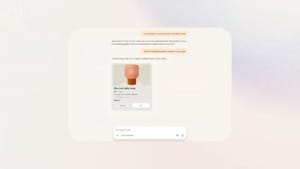Gemini AI makes office robots more useful
Google’s Gemini AI improves robotic navigation, combining natural language and visual instructions for seamless indoor assistance.

Do you need help in an office building, big box store, or warehouse? Just ask the nearest robot for directions.
Table Of Content
Google researchers have unveiled a breakthrough in robotic navigation that combines natural language processing with computer vision. This new study, published on Wednesday, highlights their work on an everyday robot that navigates indoor spaces using simple language prompts and visual inputs.
Transforming robotic navigation
Previously, robots required detailed environmental maps and specific physical coordinates to move around. This cumbersome process limited their utility. However, with recent advancements in vision language navigation, you can now instruct robots using natural language commands, such as “go to the workbench.” Google’s team has pushed this further by enabling robots to understand and act on spoken and visual instructions simultaneously.
Imagine you’re in a warehouse and need to find where an item belongs. You can show the robot the item and ask, “What shelf does this go on? ”Powered by Gemini 1.5 Pro, the AI can interpret your question and the visual data and then guide you to the correct spot. The robots were also tested with commands like, “Take me to the conference room with the double doors,” “Where can I borrow some hand sanitizer?” and “I want to store something out of sight from public eyes. Where should I go? ”
In an Instagram Reel demonstration, a researcher activated the system with an “OK robot” and requested to be led to a place where he could draw. The robot responded, “Give me a minute. Thinking with Gemini” before quickly navigating the 9,000-square-foot DeepMind office to a large wall-mounted whiteboard.
The magic behind the navigation
These robots weren’t entirely unfamiliar with the office layout. The team used “Multimodal Instruction Navigation with Demonstration Tours (MINT).” Initially, they manually guided the robot around the office, pointing out specific areas and features using natural language. This can also be achieved by recording a video tour of the space with a smartphone. The AI then creates a topological graph, matching what its cameras see with the “goal frame” from the video.
Next, the team implemented a hierarchical vision-language-Action (VLA) navigation policy. This policy combines environmental understanding with common-sense reasoning, enabling the AI to translate user requests into navigational actions.
The results were impressive, with robots achieving “86 percent and 90 percent end-to-end success rates on previously infeasible navigation tasks involving complex reasoning and multimodal user instructions in a large real-world environment,” according to the researchers.
Room for improvement
Despite these successes, there is still work to be done. The robots cannot yet autonomously perform their demonstration tours, and the AI’s response time ranges from 10 to 30 seconds, making interactions slower than desired. The researchers are aware of these limitations and are working on enhancing the system’s efficiency and autonomy.
This innovation signifies a significant leap in robotic navigation, bringing us closer to a future where robots can seamlessly assist in complex indoor environments using natural language and visual cues.













